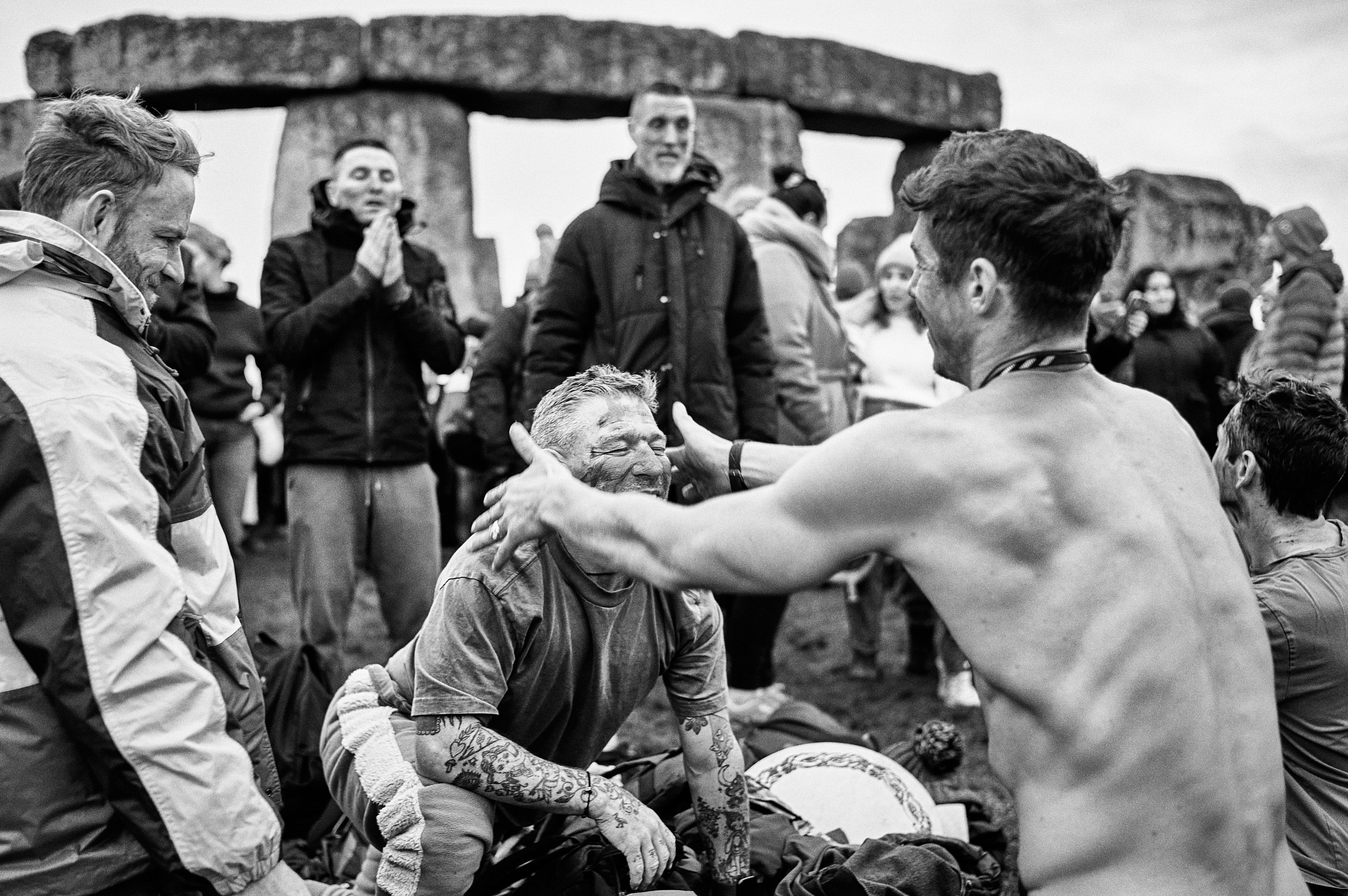The Light of Arthur
Winter Solstice, Spiritual Druidry
“Knowing yourself is the beginning of all wisdom”
During many visits to parts of Asia, I became fascinated by the Buddhist way of life. I now find myself curious about contemporary Druidism. While these two belief systems might seem like an unusual mental pairing — as they originate from different cultural, historical, and geographical backgrounds — they explore self-knowledge, revere nature and emphasise ethical living without dogmatic practices.
Shakti Sings Choir celebrate the winter solstice at Stonehenge © Martin Urch. Leica M11, 35mm
Stonehenge, the clock
Druidism is rooted in the Celtic cultures of Europe and has a long history in the British Isles, dating back to the Iron Age and possibly even into the Neolithic Age. Now, such sagacity from the past is some heritage! On December 21st, I found myself in the chalk lands of Wiltshire, surrounded by gently rolling hills, standing with Druids among one of the seven wonders of the ancient world: Stonehenge. The raising of stones and the creation of circular formations are distinctive marks of our species. Stonehenge serves as a massive clock that measures the four seasons.
Choir singing Earth celebrations at the Heel Stone © Martin Urch. Leica M11, 35mm
A bunch of Neolithic farmers created the site. They dug a big circular ditch 360 feet (110 m) across and piled up the chalk earth on the outside to form a bank. Stonehenge went through different phases, and in around 3000 BC, farmers in contact with folk in the Preseli Hills in Pembrokeshire, Wales, transported roughly 150 tonnes of ‘bluestones’ 140 miles (225 kilometres) to Stonehenge. The larger sarsen stones were sourced 15 miles (25 kilometres) north of Stonehenge. The stones were set in two circles, one inside the other, all located inside the original ditch and bank.
A moment of serenity, touching the stones at Stonehenge © Martin Urch. Leica M11, 35mm
Farmers of old needed to know the passage of time. They had to know when the days would begin to lengthen to plan for the upcoming seasons of crop sowing, the births of domesticated livestock, the ripening of crops, and the harvest. The Winter Solstice (as well as the Summer Solstice) is one of humankind’s oldest known seasonal festivals. This celebration of the return of light feels like a fitting follow-up to my previous post about the darker actions of the UK government against family farmers, who remain guardians and custodians of the countryside in my home country.
Druid leader Arthur Pendragon performs rituals at Stonehenge © Martin Urch. Leica M11, 35mm
Solstice festival
The winter solstice at Stonehenge is not only an astronomical event marked by Neolithic farmers; it also holds deep symbolic significance for Druids. It represents renewal, rebirth, and the cyclical nature of life, connecting the wonder of the present with an ancient reverence for natural cycles. During the longest night of the year, I left home before 4 a.m. to witness and photograph the 8 a.m. Winter Solstice dawn rituals at Stonehenge. It drizzled rain, and temperatures barely reached 7°C (45°F)--a typical British winter's day.
Good vibes and commitment in the cold at Stonehenge © Martin Urch. Leica M11, 35mm
As the sun rose, Druids performed invocations to express their gratitude for its life-giving energy and to seek blessings. The atmosphere was filled with music, singing, and celebration. Some people formed circles, chanting and dancing, while others offered libations or conducted meditations to honour the Earth and their ancestors. This marking of the end of the year's darkest period brings hope for the upcoming year. Standing under the massive circle of stones filled me with joy as the Stonehenge celebrations grew. There is so much to discover in our ancient roots.
Singing to the Stones at Stonehenge © Martin Urch. Leica M11, 35mm
The solstice marks the symbolic death and rebirth of the sun and begins the gradual lengthening of days and shortening of nights.
Merry Christmas and Happy New Year!
What's next?
I continue with 'Celebrating Englishness' and visit St. Ives Feast Day and Hurling the Silver Ball on the 10th of February for the next full article. This ancient tradition celebrates the consecration of the Parish Church of St Eia in 1434.
Martin Urch Photography owns the copyright to all writing and images.






